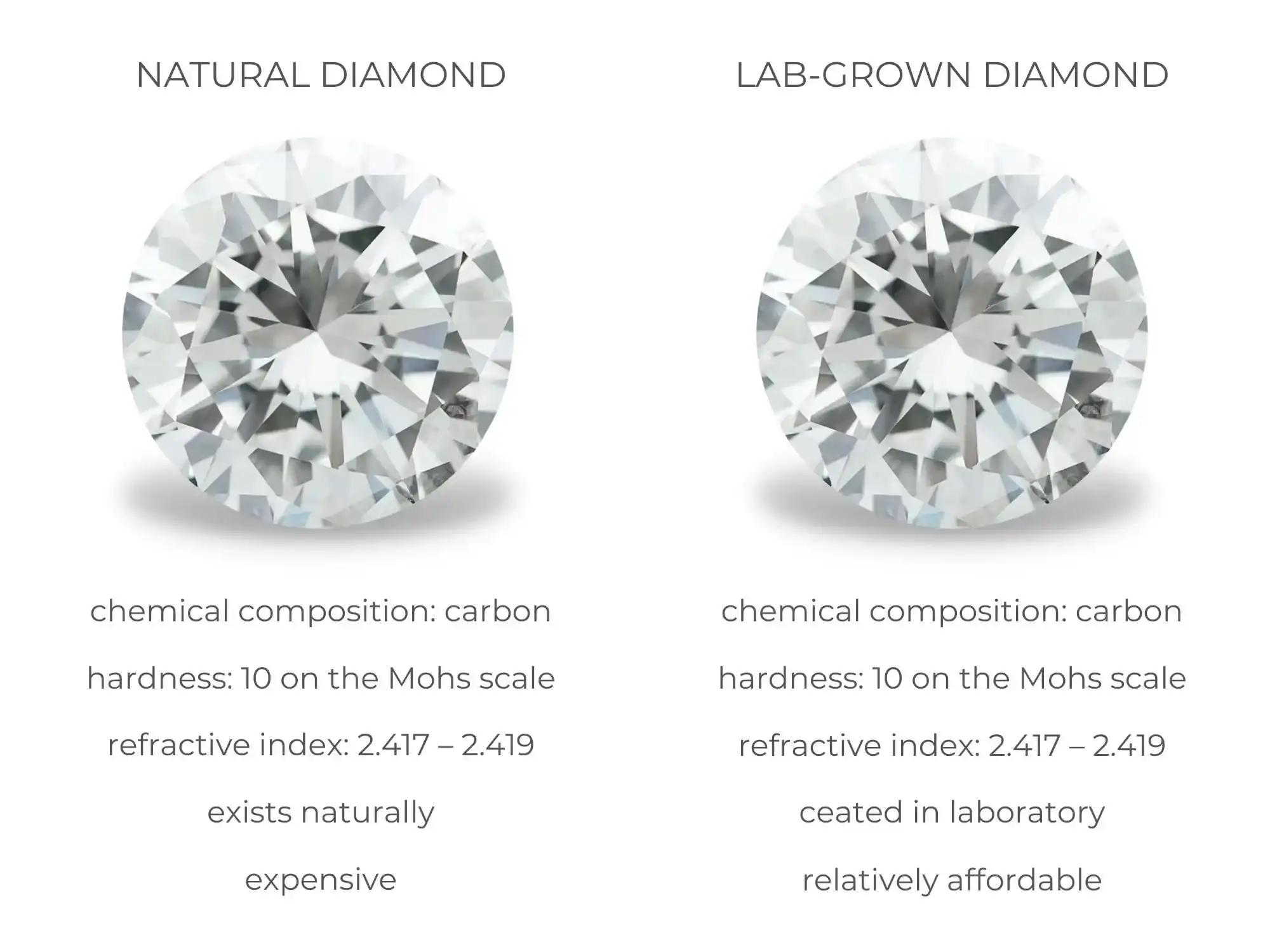This was to point out how their worth, beauty, and shine are something
that never fades away. But do these values still stand in this era of millennials? The era of man-made diamonds? The answer is short and simple – yes. The newest fashion jewelry collections prove this point, as those found on the pieces of some of the world’s biggest jewelry manufacturers prove to be just as unique and beautiful as those dug up from the earth’s crust.
Which makes us wonder – then what is the difference?
They have the same chemical composition, the same weight, density, and refractive index. They cost the same as man made diamonds of the same size and shape as a natural one. This should not surprise anyone because it is a one hundred percent, real diamond. Therefore, the term "artificial", "synthetic" or "fake" should never be used to describe them – as these terms are used for zircons, cheap crystals that are used as a substitute for expensive diamonds and gemstones.
The biggest difference between these two is in how they were made
Natural diamonds are crystals of marked durability, beauty, and rarity. They are the result of geological processes in the interior of the earth's crust. They were created under high pressure and temperatures deep below the earth's surface. The process of formation takes place 140-190 km below the surface, and in some places even deeper than 300 km where the temperature ranges from 900-1300 degrees. The process of the formation of diamonds goes back to the very beginning of the earth, and most of them were formed billions of years ago when the earth was still a red-hot mass. The time it takes for a diamond to form is not yet fully understood. It is assumed that the process lasts from several hundred million to several billion years. After complete formation, natural diamonds travel from the depths of volcanic forces to the surface of the earth where people search for them in mines around the world. In addition to natural diamonds, which are exclusively the result of the action of natural forces, there are also so-called man-made diamonds. They are obtained by technological procedures in the laboratory where the same conditions as in nature are simulated.
What they contain inside their structure is also different
Although the development of technology has brought man-made diamonds to perfection in manufacturing, there are still significant differences between natural and artificially obtained diamonds. Natural ones contain various microscopic impurities in their structure, which are the result of traveling through the earth to the surface, while lab-made diamonds are pure, i.e. colorless diamonds. They are identical to natural ones in their structure, shine, hardness, and other physical properties. The same processing and polishing techniques are also used in both types. Different particles and anomalies in the structure of these stones, invisible to the naked human eye, give natural diamonds a unique print, color, or shape and at the same time represent the basis for distinguishing natural from man-made or even fake diamonds. And while man-made diamonds make previously unobtainable gemstones available to the general public, true natural rarities still hold high positions in the market, making natural diamonds jewelry of inestimable value and attractiveness.
The difference is also in how much time it takes for a diamond to be formed
Laboratory-grown diamonds are created, as we mentioned earlier in a specific environment. When a tiny grain of diamond is placed in a chamber saturated with carbon atoms and exposed to a certain temperature and pressure; these conditions encourage the deposition of layers of pure carbon connected in a diamond lattice around the core. As opposed to the time it takes for a natural diamond to form (we mentioned how this is still unknown), this process takes about a month. Some types are formed slower, some faster. For example, white diamonds grow the slowest - one carat in two weeks, while yellow and blue ones grow in five to ten days. In simpler terms, in laboratories from Hong Kong to Silicon Valley, the natural conditions under which diamonds are formed are simulated, so the only difference between natural and man-made ones is that one was created without human influence, by a natural process over hundreds of thousands and millions of years, and the other in special chambers, in a strictly controlled process, in thirty days. However, this difference is enough for one of the biggest fashion companies to choose to avoid man-made diamonds. And there is a much more prosaic reason - those who have a lot of money want to own the rarest, most expensive, and most exceptional things that will set them apart from "ordinary" mortals, so it is in the financial interest of jewelry houses to support them in this. This brings us to one very important difference between these two…
It is in how they were made – labor vise…
One must never forget that the use of naturally occurring diamonds also has its very ugly side. Most of you reading this are familiar with the fact that the majority of diamonds are excavated from mines in Africa. The second and third largest diamonds ever found or mined this way were from Botswana. Regardless of how impressive this fact is, what is very concerning are the working conditions of people inside these mines. Needed less to say, they are below any human’s dignity. We’re talking about slave labor, the exploitation of children for labor, wages less than one dollar a day, the absence of protective equipment that leads to fatal injuries and deaths of miners, and the absence of labor and social rights. Which makes us wonder, as beautiful as they truly are, how ethical is their use in today’s fashion industry? One more reason to embrace the man-made diamond industry.













